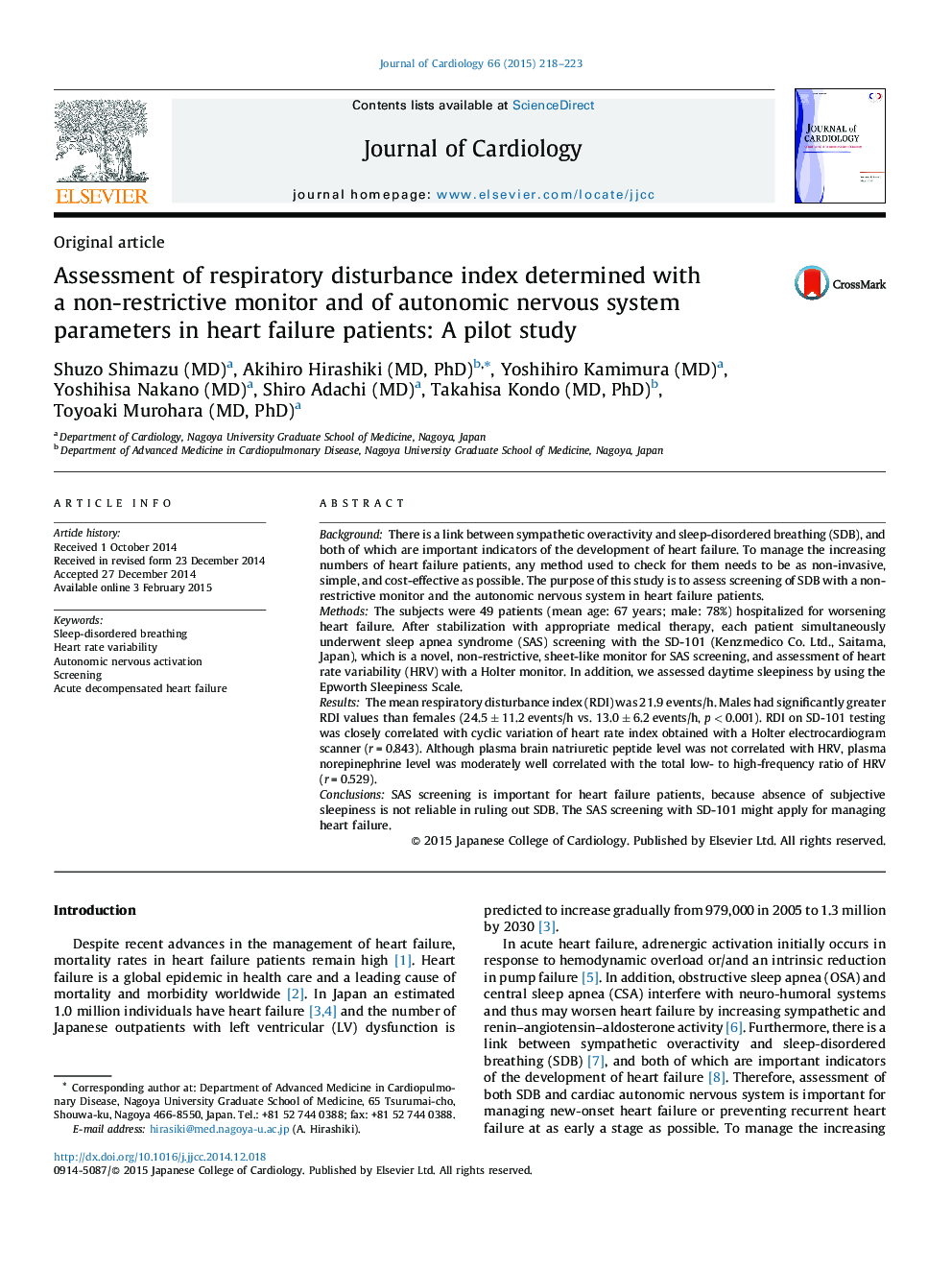| Article ID | Journal | Published Year | Pages | File Type |
|---|---|---|---|---|
| 2962882 | Journal of Cardiology | 2015 | 6 Pages |
BackgroundThere is a link between sympathetic overactivity and sleep-disordered breathing (SDB), and both of which are important indicators of the development of heart failure. To manage the increasing numbers of heart failure patients, any method used to check for them needs to be as non-invasive, simple, and cost-effective as possible. The purpose of this study is to assess screening of SDB with a non-restrictive monitor and the autonomic nervous system in heart failure patients.MethodsThe subjects were 49 patients (mean age: 67 years; male: 78%) hospitalized for worsening heart failure. After stabilization with appropriate medical therapy, each patient simultaneously underwent sleep apnea syndrome (SAS) screening with the SD-101 (Kenzmedico Co. Ltd., Saitama, Japan), which is a novel, non-restrictive, sheet-like monitor for SAS screening, and assessment of heart rate variability (HRV) with a Holter monitor. In addition, we assessed daytime sleepiness by using the Epworth Sleepiness Scale.ResultsThe mean respiratory disturbance index (RDI) was 21.9 events/h. Males had significantly greater RDI values than females (24.5 ± 11.2 events/h vs. 13.0 ± 6.2 events/h, p < 0.001). RDI on SD-101 testing was closely correlated with cyclic variation of heart rate index obtained with a Holter electrocardiogram scanner (r = 0.843). Although plasma brain natriuretic peptide level was not correlated with HRV, plasma norepinephrine level was moderately well correlated with the total low- to high-frequency ratio of HRV (r = 0.529).ConclusionsSAS screening is important for heart failure patients, because absence of subjective sleepiness is not reliable in ruling out SDB. The SAS screening with SD-101 might apply for managing heart failure.
